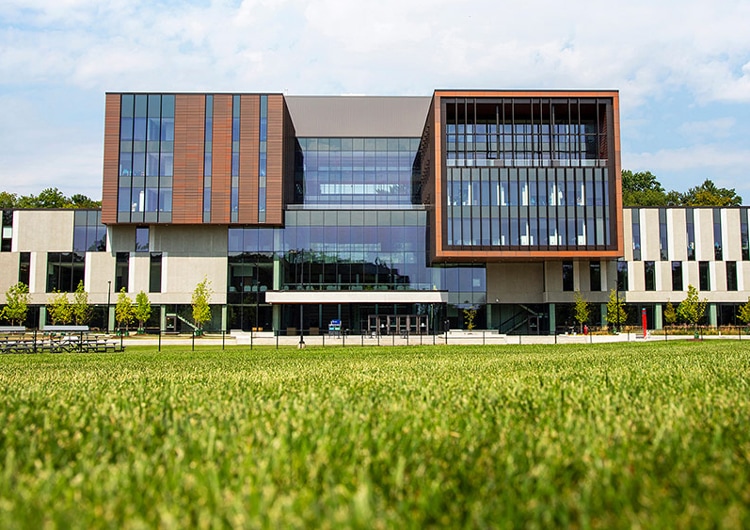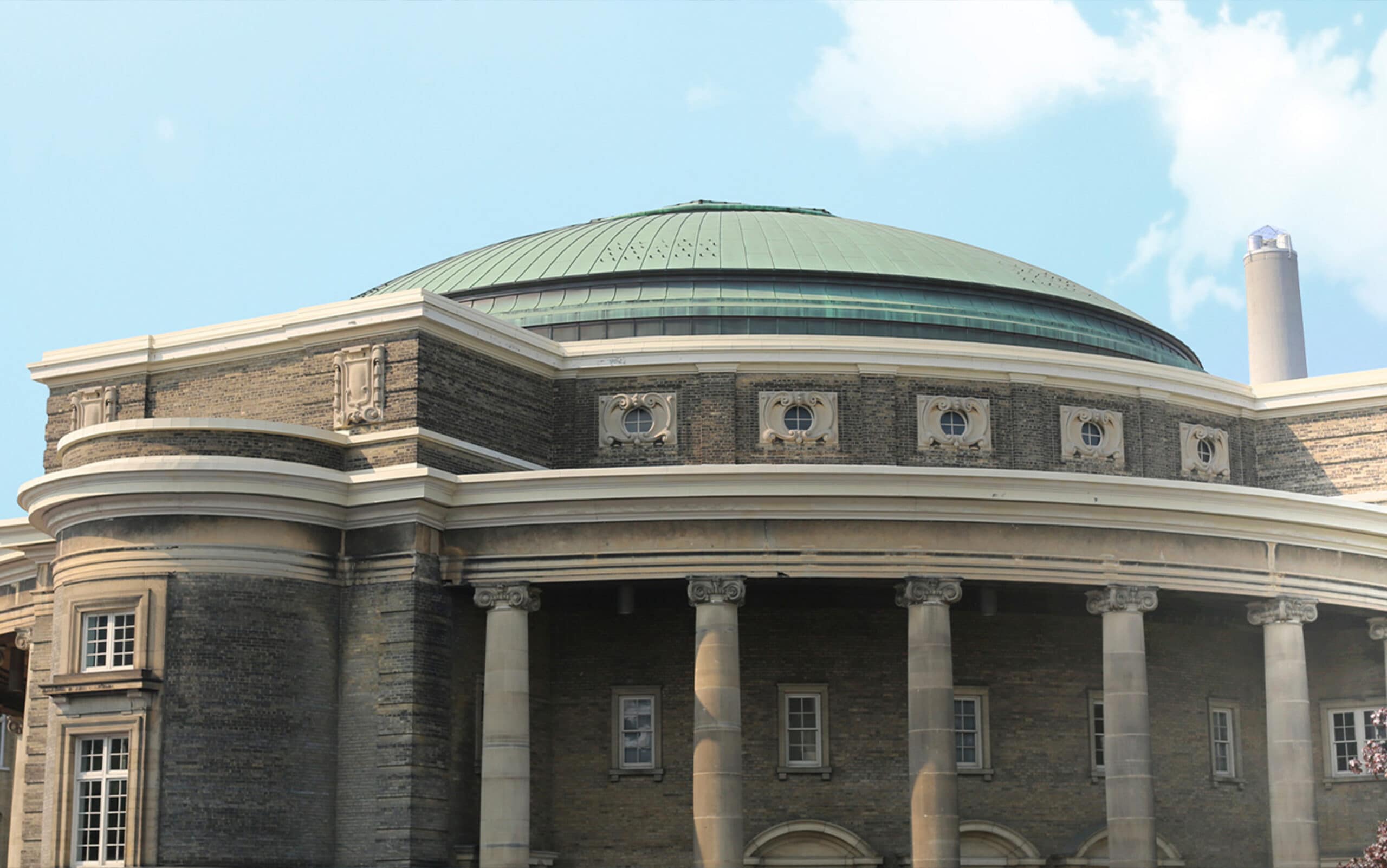Maanjiwe nendamowinan: a meaningful name for U of T Mississauga’s newest building
William C. Buttimer's generous gift helped build U of T Mississauga's newest academic building, which now receives an Anishinaabemowin name looking to the future.

In 2016, William C. Buttimer left a generous bequest of $1,750,000 to U of Ts Mississauga campus, to be used for capital projects. The funds helped build the beautiful new academic centre which has just received a new name that looks to both past and future.
The University of Toronto Mississauga announced the official name in August 2019. The name is an Anishinaabemowin phrase that acknowledges both the Indigenous history of the land and the future of the campus.
The new building, erected in place of the original 1967 North Building, unofficially opened its doors in September 2018. While construction crews completed landscaping and interior finishes, a University committee reviewed name suggestions – more than 700 in total – for the new structure.
An overwhelming number of submissions focused on Indigenous themes, leading to a collaboration with the Mississaugas of the Credit First Nation (MCFN) on whose traditional territory the campus now stands. Following careful consideration, MCFN recommended Maanjiwe nendamowinan (pronounced Mahn-ji-way nen-da-mow-in-ahn), a formally endorsed Anishinaabemowin name meaning “gathering of minds.”
The collaborative naming process reflects a commitment to reconciliation
The University will celebrate the new name at an upcoming opening ceremony.
“‘Gathering of minds’ perfectly captures the spirit and purpose of this building.”
“On behalf of the entire U of T community, I would like to thank and congratulate all those involved in the naming of this key building on the UTM campus, including the Mississaugas of the Credit First Nation,” said President Meric Gertler. “It reflects our commitment to engagement with Indigenous communities as we work together to lead the process of reconciliation.”
“I am pleased and honoured that UTM’s newest academic building will be known as Maanjiwe nendamowinan, meaning ‘gathering of minds’ in Anishinaabemowin,” said U of T Mississauga Acting Vice-President & Principal Amrita Daniere. “It captures, so perfectly, the spirit and purpose of this building, and reflects the land on which the campus operates and U of T’s ongoing response to the federal Truth and Reconciliation Commission.”
“We gratefully acknowledge the support of the Mississaugas of the Credit First Nation for bestowing the name of Maanjiwe nendamowinan on this beautiful building,” she said.
The Mississaugas of the Credit envision an Indigenous hub that grounds higher education in history and identity
“This is a major step forward on reconciliation with the Mississaugas of the Credit and UTM,” said MCFN Councillor Veronica King-Jamieson. “Through naming a building in Anishinaabemowin – Maanjiwe nendamowinan or ‘the gathering place for good minds to come together’ – this is what education is about.”
“Our vision is to have an Indigenous hub at UTM that attracts Indigenous students as they seek higher education while enabling them to stay connected and grounded to their history and identity,” King-Jamieson said. “We are honoured that UTM created space for not only the Mississaugas of the Credit through this collaboration, but for all Indigenous Peoples.”
Maanjiwe nendamowinan is designed by Perkins+Will and built by Stuart Olson Inc. The six-storey, 210,000-square-foot building replaces the original North Building and completes the renaissance of the northern portion of campus. It features an airy, six-storey atrium and event space, 40,000 square feet of new classroom space with cutting-edge technology, active learning classrooms and more than 500 new study spaces. It houses the departments of English and drama, philosophy, historical studies, language studies, political science and sociology and the Robert Gillespie Academic Skills Centre. Sustainability features, such as rainwater recycling, energy-efficient mechanical systems and green roof space, resulted in a LEED Silver designation.

